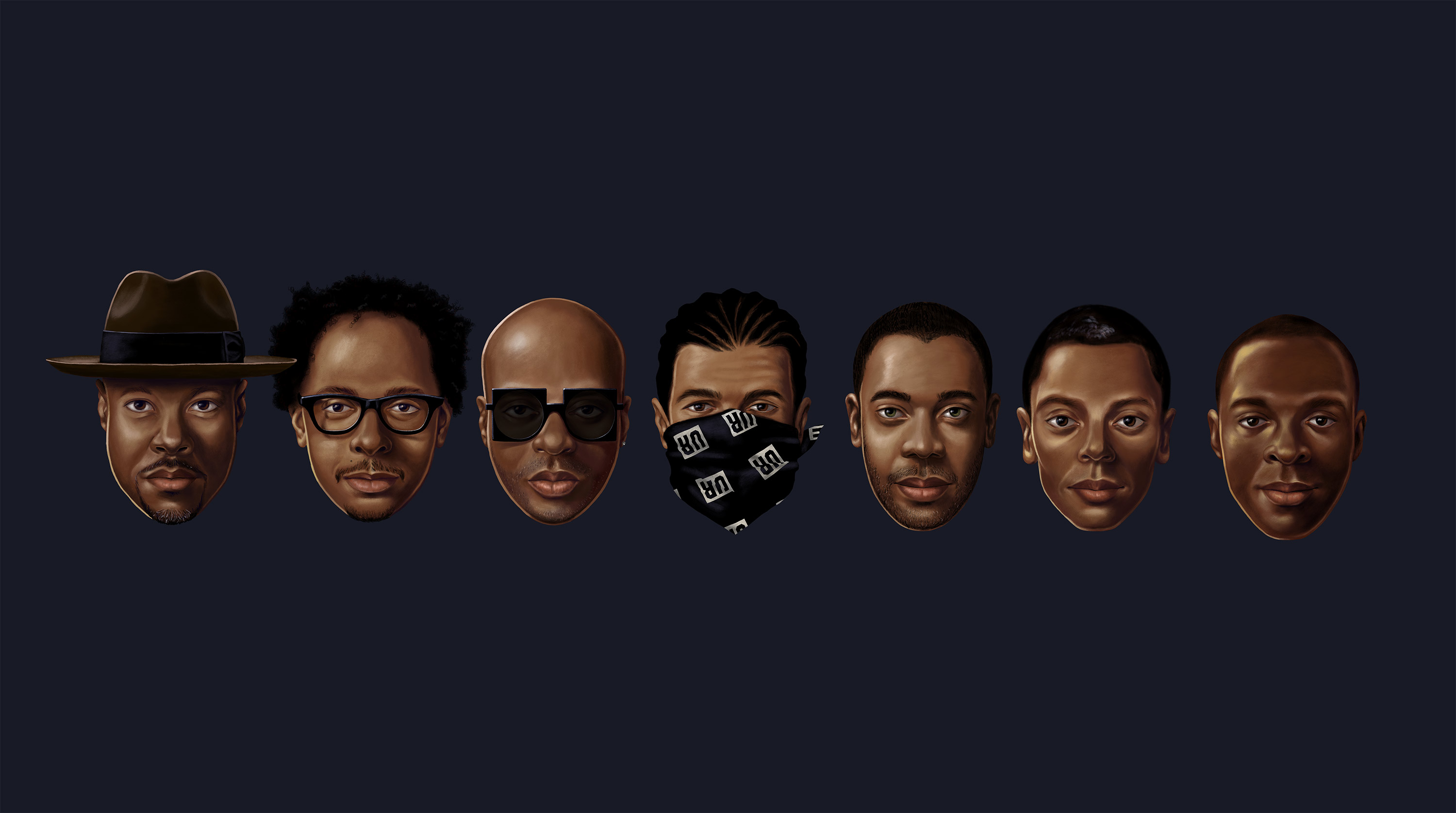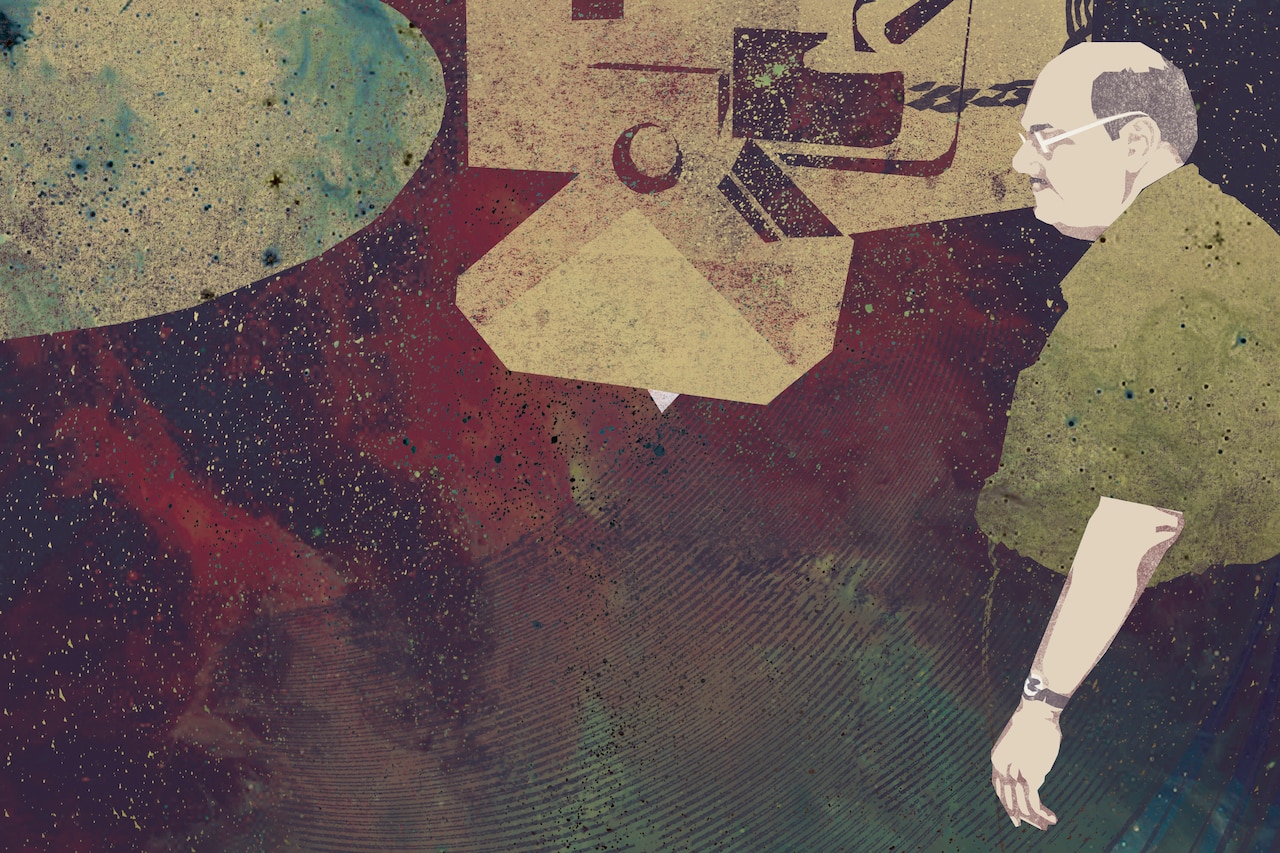
Behind the Groove: The Ron Murphy Story
If you look closely at a Detroit techno record produced before 2008, chances are you’ll find the inscription “NSC” in the run-out groove near the label. It stands for National Sound Corporation, and it was record cutter Ron Murphy’s way of leaving his signature. Murphy was a legend behind the scenes, almost exclusively responsible for cutting the master lacquers of Detroit’s techno community. “Everyone used Ron – he was the go-to guy,” says Mike Huckaby. “It was religious to take records to Ron Murphy,” adds Juan Atkins.
Born in 1948, Murphy developed a fascination with records early on. In an interview with Massive Mag, he told writer Tim Langham the story behind ordering his first record cutting equipment through a comic book at the age of 11: “In ‘59, I got a comic book and there was an ad from a place that sold these little buzzers and x-ray glasses,” Murphy explained to Langham, “and they had this thing that said, ‘Record your voice at home, just send us $6.98 and we’ll send you everything you need… full supply of blanks, cutting needles, everything… it all hooks up to your phonograph.’”
He knew more about Motown than Berry Gordy.
This was the beginning of what blossomed into a lifelong career. As Motown flourished in the city, Murphy got a job at United Sound Systems, a recording studio where good portions of pre-Hitsville U.S.A. records were mastered. Developing a strong affinity for the Motown sound, it came as no surprise that Murphy was later given the nickname “Motown Murphy” by record collectors. (He was rumored to have one of the largest Motown collections in existence.) “He knew more about Motown than Berry Gordy,” says producer Brian Gillespie. “He was the only Motown historian – even Motown historians would come to him.”
Murphy eventually became Detroit techno’s connection to Motown. But only by accident. In 1989, Murphy and his business partner Steve Martel opened a store specializing in old phonographs called National Sound Corporation on West Warren in Detroit. To have the option of cutting dubplates for customers, they set up record cutting equipment in one of the shop’s back rooms.
Like most local businesses, National Sound was listed in the phone book. And when Derrick May and Juan Atkins flipped through the pages searching for a place to make a record locally, they stumbled upon Murphy’s new company. “I sent my first two records to a company based in Cincinnati,” recalls Atkins. “So we called up National Sound and made an appointment, and went over to the place and met Ron Murphy. He sat us down and explained the mastering process to us, then [mastered a record] in front of us.”
In a 2001 interview with Metro Times, Murphy recounted the experience to writer Aaron Warshaw: “My partner and I started an oldies record store, and we put this equipment in the back, mostly just for show,” he told Warshaw. “I didn’t intend on doing any mastering, until Derrick May and Juan Atkins walked in the store. They knew what the equipment was, and Derrick May said, ‘Can I cut a master on that?’ He brought in his DAT recorder the next day, and when I asked him, ‘How do you want it cut as far as the EQ?’ he says, ‘Cut it anyway you want to do it.’ So I cut it, and he jumped up and down and said, ‘Now that’s the way a record should sound.’”
Jeff Mills, who heard about National Sound through Atkins, remembers the way Murphy would constantly compare Motown to techno: “I think Ron recognized and sensed that something was fast emerging with Detroit techno. He had seen this type of activity before with Berry Gordy and Motown.” Before long, Murphy was cutting masters for Underground Resistance and Plus 8 Records. “Ron just kind of knew that techno sound and he made it sound really good,” says John Acquaviva, who spearheaded Plus 8 alongside Richie Hawtin.
Acquaviva would make a weekly pilgrimage to Detroit from Ontario, typically stopping by Murphy’s spot. While National Sound was a mastering studio, it also served as a music school for Detroit techno artists, many of who were new to the business. “There was almost a Mr. Miyagi quality to Ron,” continues Acquaviva. “Richie [Hawtin] and I knew nothing about the music business, but with those regular mastering appointments, Ron would tell us about all the music history he lived through.”
Plus 8 was one of several new record labels working with Murphy at the time. Octave One, who had just debuted on May’s Transmat label, secured Murphy’s skills for their own label, 430 West Records. “The beginning of our [430 West] catalogue was all done by Ron,” says Lenny Burden, part of Octave One alongside his brother, Lawrence. “What was cool about Ron is that he could fix records. A lot of us, when we started making music, didn’t know what the heck we were doing. Many of us had careers because of what Ron was doing to our music – he was making our music sound so much better and making it acceptable when the original masters just weren’t.”
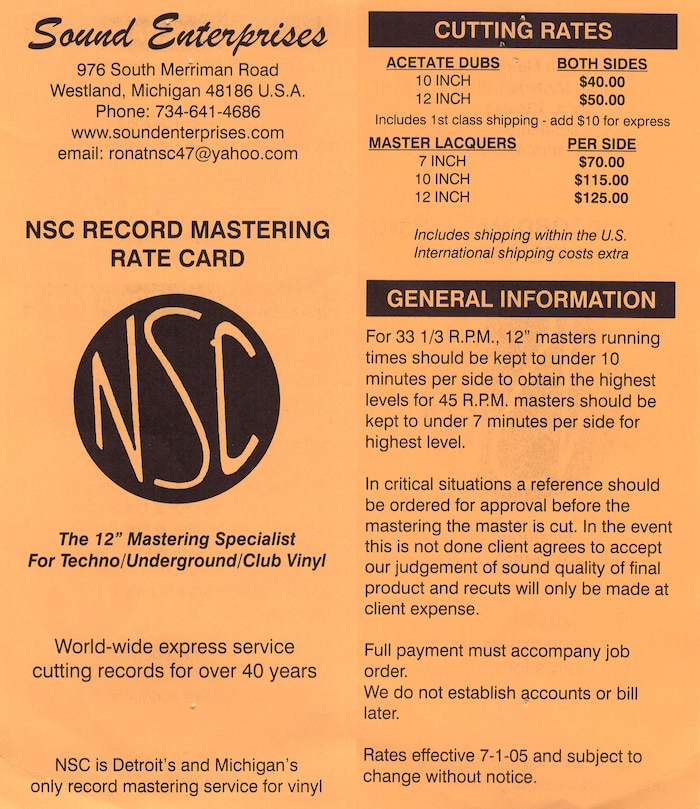
It didn’t hurt, says Anthony “Shake” Shakir that Murphy also helped his customers get the best deal possible. “Ron would do it at a nice price and he would let you know what things you had to do to improve your recordings so you wouldn’t be overspending money, because most people didn’t have a bunch of money to get the job done.”
Detroit techno was able to compete on an international level almost immediately because Murphy was capable of taking un-releasable music – music that most master record cutters would turn down – and making it sound good. “Ron Murphy was not an audio purist,” says Brendan M. Gillen of Interdimensional Transmissions. “He used the Detroit philosophy, which is using anything you can to make something work. People who worked in professional settings were always shocked at what he was doing. It wasn’t hi-fidelity.”
Rick Sadlowski, who produces under the name DJ Dick, runs ghettotech labels Twilight 76 and Databass Records alongside Gillespie and DJ Godfather. The trio mastered at least 100 records through Murphy. “He was pushing the envelope of what records could sound like,” explains Sadlowski, “because the whole mastering process was like an art form of how far you could push the frequencies on these records before the needle and the vinyl just couldn’t handle it. He would take most records to that level – he would push the subsonic sound and the bass as far as he could.”
Jeff Mills agrees. “In a discreet way, Ron kept the audio quality of the labels – such as Underground Resistance and Axis – at a certain level because he was conscious of where this music was going.”
Murphy maxed out the levels of his gear in order to keep the music moving forward. Acquaviva and Hawtin would go as far into the red as they could without distorting their sound, asking Ron to make their records as hot as possible. “We were pushing the limits of the sweeping on the low ends – it would literally raise the needle out of the groove,” recalls Acquaviva. “Ron kept telling us we were crazy, but he was equally crazy because he was pushing it as far as he could. And the world knew he was pushing it.”
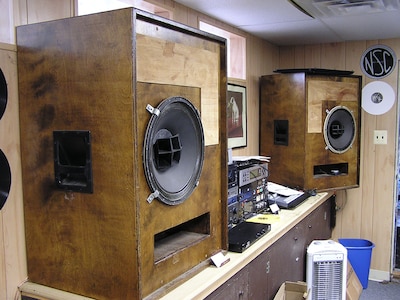
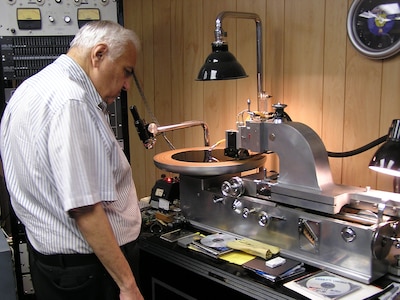
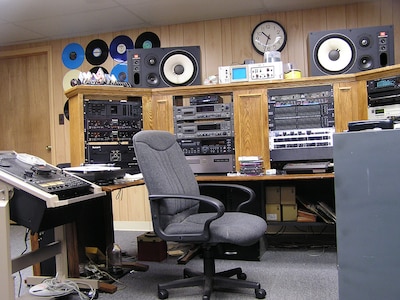
Murphy was never one to approach his work in an orthodox fashion, constantly inventing new and different ways to cut records, often with a cigar in his mouth. Locked grooves and inverted grooves, where the record would play from the inside out instead of the outside in, were common in Murphy’s work. After bootleg copies of Underground Resistance and Kevin Saunderson records surfaced, the inverted groove was a method Murphy used to thwart the problem. “That was something I didn’t know that you could do,” says Atkins. “I didn’t see any records like that until Ron’s [records].”
One of Murphy’s most famous locked groove experiments was on Jeff Mills’ The Rings of Saturn project. The two figured out that in order to create a perfect locked groove, a record must be cut at the exact speed of 133.3 beats per minute. Mills remembers the moment vividly: “In 1992, Ron and I were about to master the vinyl 12-inch EP and singles of X-102. I had thought about various ideas based on the actual formation and structure of Saturn’s rings, and asked him if we could make the grooves look like the rings. He asked me how much time I had that day… I said, ‘I’m free – let’s try.’ We weren’t aware that the BPMs needed to be 133.3, so it took a while to discover that, but once we did, we were both in amazement. I think we both knew that it was going to be a very special release.”
Double groove cuts were another trick of Murphy’s. “He would do all kinds of crazy stuff,” says Lenny Burden. “With the double groove cut, you’d put the needle down and it would play one track, but if you moved the needle slightly, it would play another track, so it was hard to figure out which track you were cueing up because you couldn’t really tell where you were starting a record. It was really interesting because no one else was doing it at that time.”
Aside from the NSC logo, it was also common to find verbiage on Murphy’s records. “He would inscribe stuff on the inside band,” recalls Atkins, “and we would send messages to each other like, ‘This is Detroit’ or ‘This is the world’s best electronic music.’” This personal touch made Detroit records unique, not only in sound, but in looks as well. “We would put handwritten notes saying some sort of mystic message,” adds Gillen, “like, ‘This is a message from another dimension.’” On a Kenny Larkin record for Plus 8, Acquaviva recalls inscribing the phrase, “Don’t step on the cracks of society, search them out and jump right in.”
Although Steve Martel, Murphy’s partner at National Sound Corporation passed away in 1994, Murphy continued to inscribe the NSC logo on every master record in Martel’s memory, turning the acronym into a stamp of distinction for Detroit techno. Following issues with Martel’s estate, Murphy purchased the record cutting equipment and moved his services further west in suburban Detroit, changing the company name to Sound Enterprises.
As Murphy’s own health started to deteriorate, his customers took notice and began to document studio sessions. Omar-S and Mike Huckaby were two of several producers who recorded personal interviews with Murphy, and one of the last five records Murphy cut before passing away was Huckaby’s 2007 EP, My Life with the Wave. “I remember just sitting there and talking to him about what I could do to give him a better cut,” remembers Huckaby, “and he willingly shared the information. He said to me, ‘you seem like you want to understand how this works.’ The beginning of the next year, he passed away.”
Murphy worked with the most personal aspect of a musician’s life – the music – and that’s why so many Detroit producers felt such a strong connection to him. “Ron cared about the techno movement and he understood the techno movement,” says T.Linder of Detroit Techno Militia. Aside from techno and soul, Murphy also mastered records for hip-hop artists and rock bands, ranging from punk to metal. (Some claim Megadeth’s “Sweating Bullets” hung on Murphy’s wall, an inside out cut on blue vinyl.) “He bridged a number of our musical legacies,” says Acquaviva. “Detroit is a real special city in that it has had more than one stage for the world.”
You could see it in his eyes. Mastering records was his passion.
To keep Murphy’s legacy alive, several Detroit artists found their own ways of continuing his work. “We’re starting to repress a lot of our earlier records and we don’t even want to go to the master tape – we want it to be taken directly from the vinyl Ron mastered to make our new master, because he was so much a part of the sound of our original records,” says Burden. Underground Resistance, meanwhile, houses Murphy’s original Scully lathe in their Submerge techno museum, completely reassembled and on display. (It took months to put back together after being transported from Murphy’s studio.)
With over 1,000 titles in the National Sound discography – on top of his prior work in soul – Murphy was a key ingredient to making several of Detroit’s biggest music movements sound just right. “He gave his opinion, advice, and sometimes criticism,” says Mills. “He knew exactly what was going on with everyone, how labels were doing, and which ones were making real progress. He knew when someone had a hit or not. We were all extremely lucky to have Ron and his handcraft. It made a big difference, and provided all of us with the kind of mastery and support that’s not common to have these days.”
In a blog post shortly after Murphy’s death, Aaron Carl wrote, “You could see it in his eyes. Mastering records was his passion.” Murphy himself told Metro Times in his 2001 interview, “Cutting is not about music. You’ve got to love records.”
Illustration: Sandra Leidecker
Header image © Sandra Leidecker
